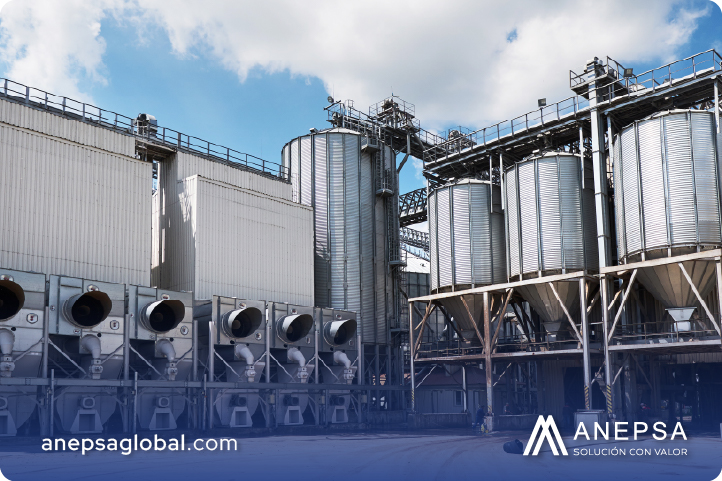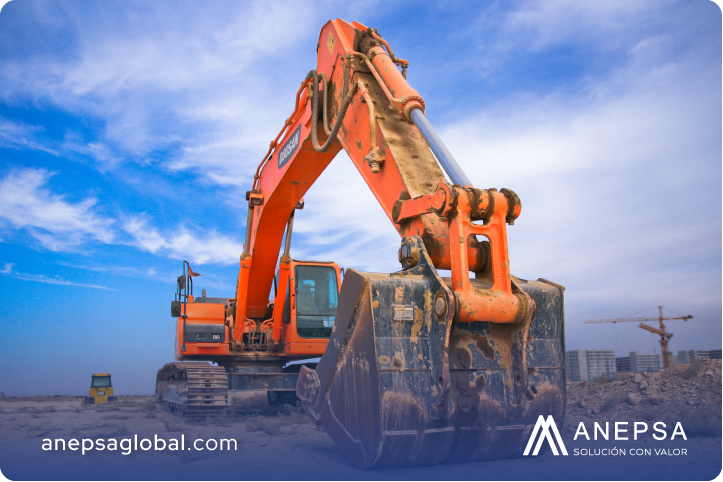Industrial Valuation - What are industrial appraisals?
index

What is Industrial Valuation?
Industrial appraisal is the process by which the value of an industrial company's assets is determined, including machinery, equipment, facilities, and other tangible and intangible assets. This process seeks to establish a fair value that reflects the condition and usefulness of the assets in the current market context. It is used in a variety of situations, including mergers, acquisitions, financing, and insurance.
What assets apply to an Industrial Valuation?
Industrial appraisal covers various types of assets, including:
| Asset Type | Description | Examples |
|---|---|---|
| Machinery | Equipment used directly in production processes. | CNC lathes, hydraulic presses, extruders, assembly lines, forklifts, industrial robots. |
| Teams | Tools and auxiliary systems that support industrial operations. | PLCs, industrial computers, compressors, generators, laboratory equipment, sensors. |
| Facilities | Physical infrastructure used in industrial activities. | Industrial buildings, warehouses, electrical networks, ventilation systems, industrial floors. |
| Real Estate | Properties and land involved in the operation of the company. | Land, industrial buildings, maneuvering yards, administrative offices, parking lots. |
| Industrial Intangible Assets | Non-physical assets with technical or strategic value in the production process. | Patents, utility models, industrial designs, know-how, technology licenses, CAD/CAM software. |
Industrial Valuation Methods
There are several methods used in industrial appraisal, each with its own specific approach:
- Cost Approach: Calculates the replacement cost of assets, taking into account accumulated depreciation. This method is useful for valuing tangible assets.
- Income Focus: It is based on the income generated by the assets, projecting future cash flows and discounting them to their present value. It is ideal for companies with stable income.
- Market Focus: Compare assets with similar transactions in the market. This is useful for obtaining a realistic price reference.
Factors Affecting the Value of Industrial Assets
Several elements can influence the valuation of industrial assets:
- Status of the Equipment: The physical condition and functionality of machinery and equipment directly impacts their value.
- Antiquity: The age of assets can affect their depreciation and, therefore, their valuation.
- Market Demand: Changes in demand for products or services can alter the value of assets.
- Location: The geographic location of facilities can influence operating costs and market access.
- Regulations: Compliance with industry regulations and standards also affects valuation.
Importance of Industrial Valuation
Industrial appraisal is essential for several reasons:
- Strategic Decision Making: Provides critical information for investment, expansion or divestment decisions.
- Preparation for Sales or Purchases: Allows you to establish a fair price in transactions, increasing credibility with buyers or sellers.
- Attractive for InvestorsAn accurate appraisal can attract investment by showing the true value of assets and growth potential.
- Risk Management: Helps identify operational and financial risks, enabling the company to take proactive measures.
Industrial Appraisal Process
The industrial appraisal process generally follows these steps:
- Data Collection: Gather relevant information about the assets, including financial statements, technical documentation, and maintenance records.
- Physical Inspection: Perform a physical assessment of assets to determine their condition and functionality.
- Market Analysis: Research similar transactions and market conditions to gain background.
- Method Selection: Select the most appropriate valuation approach based on the assets and the purpose of the appraisal.
- Preparation of the Report: Document the findings and methodology used, providing a clear and justified analysis.
Bulletin C-15 and Industrial Valuation
Bulletin C-15, issued by the Mexican Valuation Standards Council (CMNV), addresses the valuation of intangible assets, but also has important implications in the context of industrial valuation.
It establishes principles and standards for the valuation of intangible assets, which is crucial in industrial sectors where these assets can be significant, such as trademarks, patents, and copyrights.
MethodologyThe bulletin suggests various approaches to valuation, including the income approach, the cost approach, and the market approach. This is relevant to industrial valuation, as many companies have intangibles that affect their overall value.
Importance of IntangiblesIn an industrial context, intangible assets such as technical knowledge, brand reputation, and customer relationships can influence a company's performance and value.
Reporting StandardsBulletin C-15 also emphasizes the need for clear and detailed valuation reports, which is essential for stakeholders (investors, partners, regulators) to understand the value of the company and its assets.
Relationship with Industrial Valuation
Comprehensive Assessment: Industrial valuation should not only focus on tangible assets (machinery, equipment, facilities), but also consider the intangible assets detailed in Bulletin C-15, which provides a more complete view of the company's value.
Strategic Decisions: Combining tangible and intangible asset valuations enables companies to make more informed decisions about investments, financing, and mergers and acquisitions.
Regulatory Compliance: Integrating Bulletin C-15 guidelines into the industrial valuation process helps ensure compliance with applicable regulations, increasing the credibility of the valuation.
Adaptability to Market Changes: By focusing on comprehensive valuation, companies can better adapt to changes in demand for products and services, as well as technological innovations that can affect both tangible and intangible assets.
NIF C-6 and its relationship with Industrial Valuation
IFRS C-6 (Financial Reporting Standard) refers to the valuation of assets, specifically inventories. However, its application also extends to industrial valuation in the context of machinery and equipment.
The purpose of NIF C-6 is to establish the criteria for valuing inventories and the costs that should be included in their determination. Although it focuses on inventories, its principles can be applied to machinery and equipment used in production.
Acquisition Cost: The standard establishes that the cost of an asset must include all expenses necessary to put it into working order. This includes:
Purchase price.
Transportation and handling costs.
Installation costs.
Non-recoverable taxes.
Valuation Methods: NIF C-6 allows different methods for valuing inventories, which may be applicable to machinery and equipment in an industrial context:
Weighted Average Cost: It is used to calculate an average unit cost.
FIFO (First In, First Out) method: Assume that first in, first out costs.
LIFO (Last In, First Out) method: Consider that the last costs in are the first to go out.
Long-Term Asset Valuation: Although the standard focuses on inventories, the way long-term machinery and equipment are valued can follow similar principles, considering the depreciation and amortization of assets.
Consideration of Obsolescence: NIF C-6 also mentions the need to assess the obsolescence of assets. In the case of machinery and equipment, this is crucial for determining fair value, as technology advances rapidly and can affect the usefulness of assets..
Revaluation: Although not common in all contexts, the standard may allow for asset revaluations in certain circumstances, which could apply to machinery and equipment based on market changes or significant improvements.
Accounting Record: The standard establishes that assets must be recorded at their acquisition cost and, where appropriate, adjusted for depreciation. This is essential for the presentation of accurate financial statements.
Impact on Decision Making: Correct application of NIF C-6 in industrial valuation not only affects financial statements but also provides key information for strategic decision-making, such as investment, financing, and operational planning.
MFRS C-6 provides a valuable framework for industrial valuation, especially with regard to machinery and equipment. Proper application of its principles can help companies accurately reflect the value of their assets, which is critical for financial management and reporting.
Recommendations for Companies Seeking to Conduct an Industrial Valuation
Some recommendations for companies looking to prepare for an appraisal include:
- Regular Maintenance: Ensure all assets are well maintained and in good condition to maximize their value.
- Complete Documentation: Maintain detailed records of the acquisition, use and maintenance of assets.
- Projections Update: Review and update financial and operational projections to reflect the current state of the business.
- Professional Consulting: Consider the advice of professional appraisers to obtain an objective and accurate evaluation.



